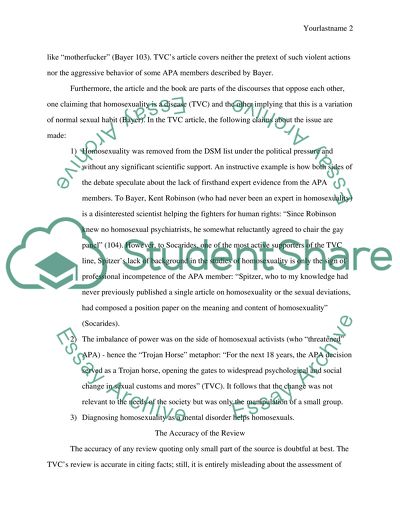Cite this document
(“Homosexuality & American Psychiatry by Ronald Bayer Essay”, n.d.)
Retrieved from https://studentshare.org/philosophy/1462735-homosexuality-american-psychiatry-by-ronald-bayer
Retrieved from https://studentshare.org/philosophy/1462735-homosexuality-american-psychiatry-by-ronald-bayer
(Homosexuality & American Psychiatry by Ronald Bayer Essay)
https://studentshare.org/philosophy/1462735-homosexuality-american-psychiatry-by-ronald-bayer.
https://studentshare.org/philosophy/1462735-homosexuality-american-psychiatry-by-ronald-bayer.
“Homosexuality & American Psychiatry by Ronald Bayer Essay”, n.d. https://studentshare.org/philosophy/1462735-homosexuality-american-psychiatry-by-ronald-bayer.


